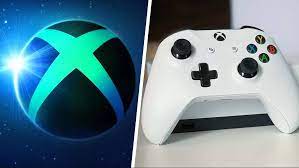Windows 11 has a Deployment Image Servicing and Management (DISM) command utility to scan and repair Windows image files. Its restorehealth command can fix a corrupted image and all the problems that arise from it.
The command can also fix the System File Checker tool when it’s not working, as the SFC tool uses files from the system image to do its job.
To run a DISM repair scan, you’ll usually need to manually bring up Command Prompt and input the RestoreHealth command. However, you can also set up a variety of shortcuts to run a Windows Image Repair scan with these methods.
How to set up Windows Image Repair Scan desktop shortcut
To set up a desktop shortcut to run a Windows Image Repair scan, you’ll need to create a batch script that first executes its restorehealth command. You can then add a shortcut for that batch file to the desktop. This is how you can create a Windows Image Repair Scan batch file with Notepad.
Now you can set up a desktop shortcut to run Windows Image Repair.bat file. You can do this with the Create Shortcut Wizard as follows.
Try the new Windows Image Repair shortcut on the desktop now. Right-click that shortcut’s icon to select Run as administrator (the restore command only works in an elevated prompt). A command prompt window will then open, and ResoreHealth Scan will do its job.
How to set up Windows Image Repair Scan taskbar shortcut
Or would you prefer to have Windows Image Repair Scan button on Windows 11’s taskbar? If you want to, you’ll need to create a restorehealth command desktop shortcut as mentioned for the method above. Once you’ve done that, you can pin that shortcut to the taskbar as follows.
Now you can press the Windows Image Repair button on the taskbar to run a RestoreHealth scan at any time. It was necessary to configure the desktop shortcut to run as administrator before pinning it because you can’t select that option on the right-click menu of a taskbar button. You can remove the Windows Image Repair desktop shortcut by right-clicking its icon and choosing Delete.
How to set up Windows Image Repair Scan keyboard shortcut
Adding a Windows Image Repair desktop shortcut lets you create a hotkey from it. You will then be able to run the restorehealth command by pressing the Ctrl + Alt key combination assigned to the Windows Image Repair shortcut on the desktop. You can add hotkeys to desktop shortcuts, as instructed in our guide to assigning keyboard shortcuts to programs.
A Ctrl + Alt program hotkey relies on its desktop shortcut. If you delete a desktop shortcut, you also delete the key combination assigned to it. Therefore, you will need to have a Windows Image Repair Scan shortcut on the desktop for the assigned hotkey to work.
Also, note that the Windows Image Repair desktop shortcut needs to be configured to run with administrator rights for the assigned restorehealth command hotkey to work. If it isn’t, you’ll see a command error in the Command Prompt window. Therefore, set the desktop shortcut to run with administrative rights, as described in steps one through six of the previous taskbar method.
How to set up the Repair Windows Image Context Menu shortcut
Windows 11’s desktop context menu is another good place to add command shortcuts, but it’s a pity that there are no built-in options to customize it. However, you can still add a Repair Windows Image option to that right-click menu with the freeware WinRow Tweaker optimization app. Here’s how to add the RestoreHealth command shortcut to the context menu with Winaero Tweaker.
Now you can see new context menu option to run RestoreHealth command. Right-click a part of the desktop area and choose Show more options. Move the cursor to the Repair Windows Image submenu, which contains two options. Selecting Repair Windows Image will execute the restorehealth command.
The Optional Check Health of Windows Image option runs the Deployment Image Servicing Management check health command. That option checks the system image and reports any problems found. However, the CheckHealth scan does not apply any repairs.
Give Yourself Quick Access to Windows Image Repair Commands
You probably won’t need to run a RestoreHealth Windows Image Repair scan very often. However, it is still an important troubleshooting command to use in conjunction with SFC whenever Windows or third-party software errors arise.
Therefore, it’s a good idea to set up a shortcut with which you can quickly run the DISM RestoreHealth command when you need it. Such a shortcut would save you from having to look up the syntax of that command and execute it manually.



